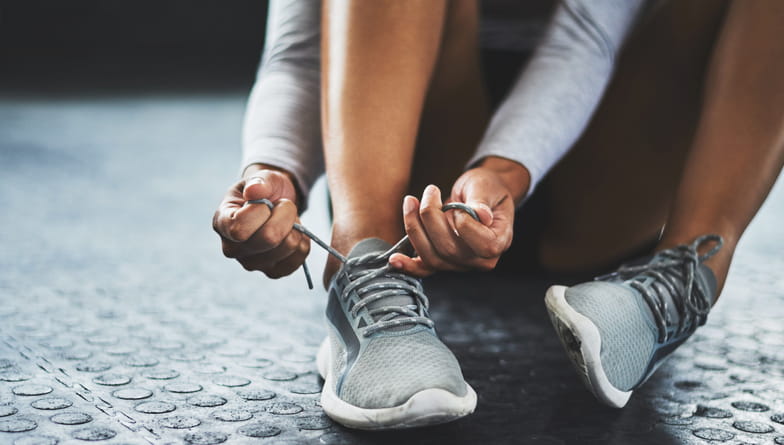Take Breaks & Pace Yourself
If you are sitting at a desk all day, you need to take breaks to move around. Likewise, if you are active all day, take breaks to rest. Varying your position throughout the day will help keep your back happy and healthy.
Additionally, drastic changes in activity level can make your back susceptible to injury. If you aren’t a very active individual, jumping into a full day of yard work without breaks will put stress on your back. Easing into strenuous activities helps to protect you back and prevent injuries.
Maintain a Healthy Weight
Your weight impacts your spine, so additional pounds — especially around your belly — cause strain on your back. Achieving and maintaining a healthy weight can reduce the stress on the spinal column and the stress on the discs between the vertebrae.
Click here to learn healthy ways to lose weight.

Don’t Smoke or Vape
While smoking doesn’t cause back pain, it can make someone more susceptible to injury and significantly delay healing. Smoking, vaping or using any type of product containing nicotine causes constriction, or tightening, of the blood vessels and limits the nutrients delivered to muscles, bones and ligaments in the back and spine.
Additionally, smokers are usually not eligible for the most life-changing spine surgeries which involve fusions, due to the increased risk of infection and non-union (failure) of the fusions.

Manage Stress
It’s no secret that people carry stress in their backs and necks. But the problem goes deeper than tense muscles. Stress can impact the back in other ways as well. In fact, it’s known to cause an increased sensitivity to pain, reduced blood flow and inflammation in the body, all of which can worsen back pain and make it harder to recover from an injury. Additionally, stress contributes to poor posture and lack of sleep, both of which can negatively impact back pain. Different stress management strategies work for different people. Some find practices like meditation, yoga, pilates or tai chi helpful. Others relax themselves by playing in the park with their dogs or simply being outside to enjoy nature.
Lift From Your Knees
Proper lifting technique is vitally important for maintaining a healthy back. While it may seem easier to bend at the waist to pick up an item from the floor or to tie your shoes, that motion puts great strain on your back. Instead, by squatting to lift something, you can shift the exertion from your back to your legs, protecting your back muscles and spine.
Prevent Falls
The first time someone notices a back injury is often after a fall. In those kinds of situations, people often twist and fall unevenly, tweaking the back and hitting the ground or an object in an awkward manner. No one means to fall, but by taking a few precautions we can all reduce our risk of unexpectedly ending up on the floor in pain. Simple changes in our environments or routines can help us stay safe. Avoid risky activities like walking on an icy sidewalk or driveway, or standing on a chair to reach a high shelf or paint. Take smart precautions, such as using a ladder and walking safely in icy conditions, to help avoid injuries. Floor lighting at night can help prevent falls that occur when getting out of bed in the dark. Fall prevention is even more important as we get older, as our balance and muscle strength naturally lessen and our bones become more fragile with age.Explore our Fall Prevention Checklist to help reduce risks and keep your loved ones secure.


